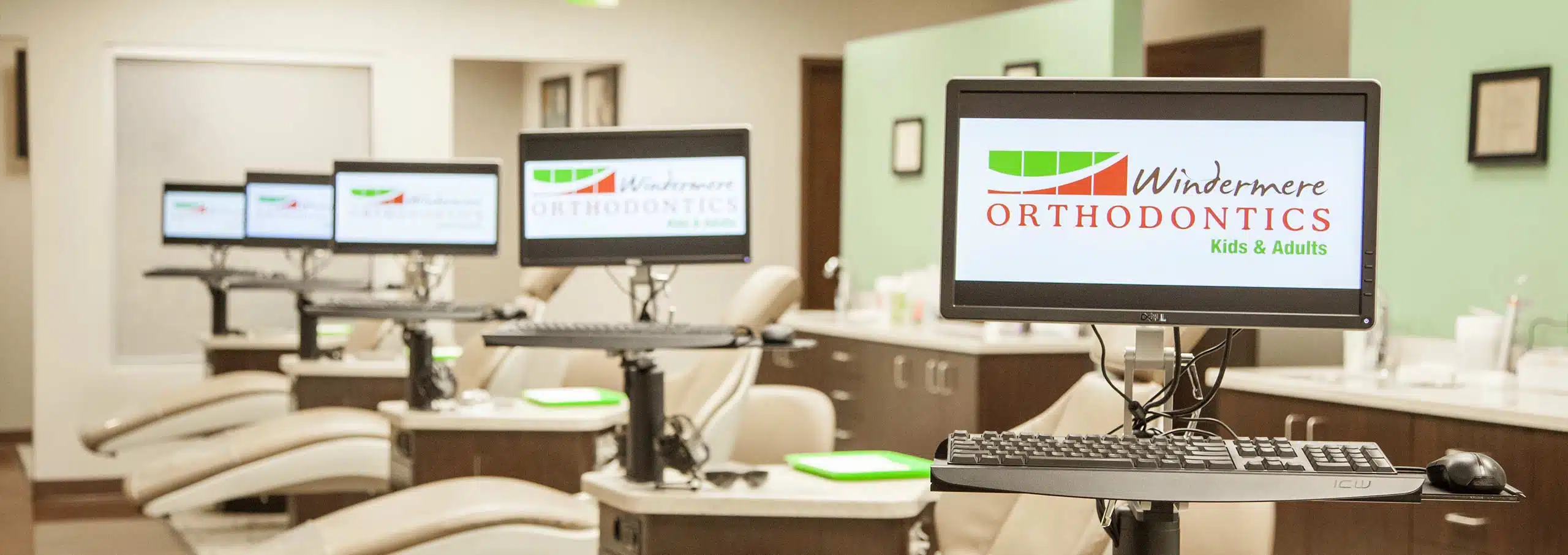
Palatal Expander
A palatal expander, is used to widen the upper jaw (maxilla) so that the bottom and upper teeth will fit together better. This is a common orthodontic procedure. Although the use of an expander is most common in children it can be and has successfully been used in adults, although the effects of expansion are slightly more uncomfortable. Also, depending on the amount of correction and age of the patient, it may result in surgical separation of the maxilla. Use of a palatal expander is most often followed by braces to straighten out all the teeth now that room has been created.
MARA
MARA is an acronym for Mandibular Anterior Repositioning Appliance. This appliance is used to encourage forward growth of the lower jaw. Out of all of the types of appliances currently available to position the lower jaw forward, this appliance is the easiest to get used to and is the least obtrusive. Removable types of appliances that can address this problem (Activators, Bionators, Twin Block Appliances, etc.) are relatively bulky and patient compliance is usually not that good. Fixed appliances (ones that stay in all the time) eliminate most of the compliance problems, but others (Herbst, Mandibular Corrector) are more difficult to tolerate and are prone to breakage.
FORSUS
The unique coaxial spring design of the Forsus™ Fatigue Resistant Device addresses the issue of fatigue failure – a fracture caused by repeated application of stresses in the coil spring. To maximize fatigue life, the Forsus Fatigue Resistant Device is designed to keep these stresses to a minimum. Traditional solutions simply can’t compare in terms of strength, reliability, ease of use and patient satisfaction. Put the Forsus Fatigue Resistant Device to work for you, and discover how it can force your productivity to new heights.
Carrière
The Carrière SLB is the new star of self ligating brackets. It is a completely passive bracket that permits a “biologic looseness” of the wire inside the full four-wall lumen. The Working Hypothesis for the design of the Carrière SLB has been to avoid the binding of the arch to the bracket, so the periodontal tissue does not become in a “global state of war” reaction. With the Carrière SLB self-ligation system, the forces applied for adequate orthodontic treatment are not interfered by binding forces normally present from elastic o-rings or metal ties. The result is minimal friction and improved sliding mechanics. Teeth are able to move FASTER with LOWER forces and fewer adjustments making the treatment more comfortable and enjoyable for the patient.
Dynaflex CS2000
Class II
Class III
The newest addition to the Series 2000® appliances is the CS 2000® for superior fixed Class II or Class III correction. In permanent dentition, the springs are most commonly attached to the archwire. In mixed dentition, the springs are attached to any conventional fixed intraoral appliance. The CS 2000® uses an exclusive, patented coil spring that utilizes laser welded eyelets for extremely effective performance and durability. The springs can easily be removed by removing the screw from the housing nut similar to the Herbst® connectors.
Lingual Arch
A lingual arch is an orthodontic device which connects two molars in the upper or lower dental arch. The lower lingual arch (LLA) has an archwire adapted to the lingual side of the lower teeth. In the upper arch the archwire is usually connecting the two molars passing through the palatal vault, and is commonly referred as “Transpalatal Arch” (TPA).
LLA and TPA are fabricated by placing bands on the molars. These are connected to the archwire. The wire can be soldered to the bands or inserted into lingual sheaths welded to the molar band (removable LLA and TPA).
Nance
The Nance Appliance is used to prevent upper molars from rotating or moving forward after you’ve worn a headgear, a Wilson’s arch or any other appliance to move your molars back. Some patients wear the Nance Appliance while they are awaiting their bicuspids to grow into place.
The appliance is made of two bands that are cemented onto the first molars and a wire spans the roof of the mouth from one molar to the other. An acrylic pad or “button” covers the wire that touches the roof of your mouth directly behind your front teeth.
Fixed Retainers
Fixed Retainers, also known as permanent or bonded retainers, are glued to the inside (or lingual) of two or more teeth. They are considered permanent because patients can’t take them in and out on their own. These retainers have the advantage of not requiring any cooperation on the part of the patient beyond keeping them clean. Parents never have to ask their kids where these retainers are since these cannot be forgotten, misplaced, or outgrown. Bonded retainers provide the most control of any retainer type. Bonded retainers also have some drawbacks, however. They are the hardest to keep clean of any retainer, requiring that the patients thread floss between every tooth that is attached. Another disadvantage of bonded retainers, especially behind the upper front teeth, is that they continually come unglued from the teeth due to the cement being slowly worn away during normal chewing.
